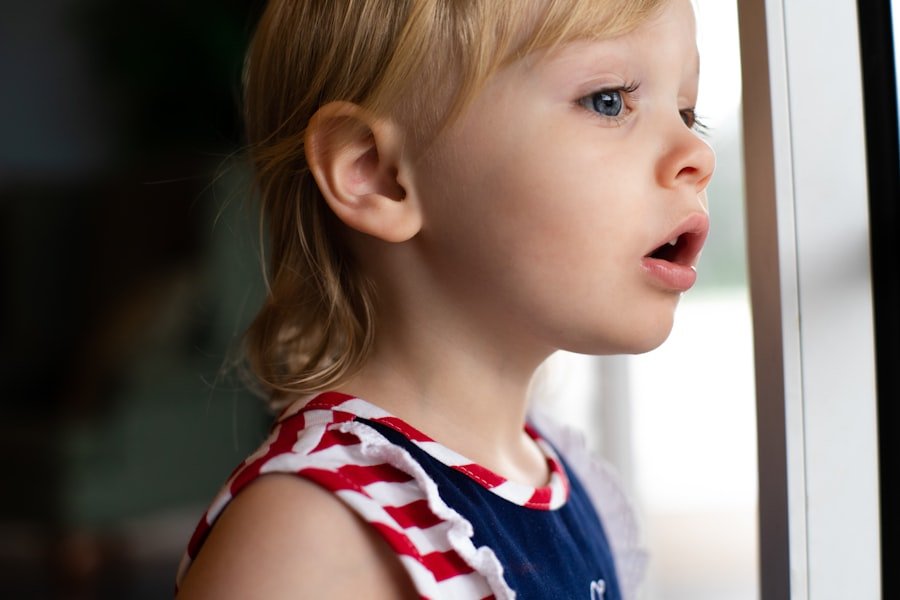Behavioral Symptoms of ADHD in Children

Attention-deficit/hyperactivity disorder (ADHD) is a neurodevelopmental disorder that affects children and often continues into adulthood. It is characterized by persistent patterns of inattention, hyperactivity, and impulsivity that can interfere with daily functioning and development. According to the American Psychiatric Association, ADHD affects approximately 5-10% of children worldwide, making it one of the most common childhood disorders.
The exact causes of ADHD are still not fully understood, but research suggests that it is likely a combination of genetic, environmental, and neurological factors. Studies have shown that children with ADHD often have lower levels of certain neurotransmitters in the brain, such as dopamine and norepinephrine, which play a role in regulating attention and impulse control. Additionally, there is evidence to suggest that genetics may play a role in the development of ADHD, as it tends to run in families.
Key Takeaways
- ADHD is a neurodevelopmental disorder that affects children’s behavior, attention, and social interactions.
- Common behavioral symptoms of ADHD in children include impulsivity, hyperactivity, and poor attention span.
- Children with ADHD may struggle with emotional instability and have difficulty regulating their emotions.
- ADHD can have a significant impact on children’s social life and education, leading to academic and social difficulties.
- Diagnosis of ADHD in children involves a comprehensive evaluation of symptoms, medical history, and behavioral assessments.
Common Behavioral Symptoms of ADHD in Children
Children with ADHD may exhibit a range of behavioral symptoms that can vary in severity. The three main symptoms associated with ADHD are inattention, hyperactivity, and impulsivity.
Inattention refers to difficulty focusing on tasks or activities, being easily distracted, and having trouble staying organized. Children with ADHD may have difficulty following instructions, completing assignments, and paying attention to details. They may also frequently lose or misplace items and struggle with time management.
Hyperactivity is characterized by excessive movement and restlessness. Children with ADHD may have difficulty sitting still for extended periods of time and may constantly fidget or squirm. They may also talk excessively and have difficulty engaging in quiet activities.
Impulsivity refers to acting without thinking or considering the consequences. Children with ADHD may blurt out answers before a question is finished, interrupt others during conversations or activities, and have difficulty waiting their turn.
Emotional instability is another common symptom of ADHD. Children with ADHD may experience frequent mood swings, have difficulty regulating their emotions, and may be more prone to outbursts of anger or frustration.
Poor Attention Span and Hyperactivity in Children with ADHD
One of the hallmark symptoms of ADHD is a poor attention span. Children with ADHD often struggle to focus on tasks or activities for an extended period of time. They may become easily distracted by external stimuli or their own thoughts, making it difficult for them to complete assignments or follow instructions.
Hyperactivity is another common symptom of ADHD. Children with ADHD often have an excess of energy and may have difficulty sitting still for long periods of time. They may constantly fidget or squirm, and may have a hard time engaging in quiet activities.
Restlessness is also a common symptom of ADHD. Children with ADHD may feel a constant need to be in motion and may have difficulty staying in one place for too long. This restlessness can make it challenging for them to focus on tasks or sit still in a classroom setting.
Impulsivity and Emotional Instability in Children with ADHD
Impulsivity is a key symptom of ADHD and refers to acting without thinking or considering the consequences. Children with ADHD may blurt out answers before a question is finished, interrupt others during conversations or activities, and have difficulty waiting their turn. This impulsivity can lead to difficulties in social situations and can interfere with academic performance.
Emotional instability is another common symptom of ADHD. Children with ADHD may have difficulty controlling their emotions and may experience frequent mood swings. They may be more prone to outbursts of anger or frustration, and may have difficulty regulating their emotions in response to different situations.
The Impact of ADHD on Children’s Social Life and Education
ADHD can have a significant impact on a child’s social life and education. Children with ADHD often struggle to make and maintain friendships due to their difficulties with impulse control, hyperactivity, and emotional regulation. They may have trouble following social cues and may struggle with appropriate social interactions.
In an educational setting, children with ADHD may have difficulty staying focused and completing assignments. They may struggle with time management and organization, leading to poor academic performance. Additionally, their hyperactivity and impulsivity can disrupt the classroom environment and lead to behavioral issues.
The challenges associated with ADHD can also take a toll on a child’s self-esteem. Children with ADHD may feel frustrated and misunderstood, which can lead to feelings of inadequacy and low self-worth.
How to Diagnose ADHD in Children

Diagnosing ADHD in children involves a comprehensive evaluation process that takes into account the child’s symptoms, medical history, and observations from parents, teachers, and other caregivers. The diagnostic criteria for ADHD are outlined in the Diagnostic and Statistical Manual of Mental Disorders (DSM-5), which is widely used by healthcare professionals.
To be diagnosed with ADHD, a child must exhibit symptoms of inattention, hyperactivity, and impulsivity that are persistent and interfere with daily functioning. These symptoms must also be present in multiple settings, such as at home and at school.
The evaluation process typically involves a thorough medical history review, including information about the child’s developmental milestones and any previous medical or psychiatric conditions. Parents, teachers, and other caregivers may be asked to complete questionnaires or rating scales to provide additional information about the child’s behavior.
It is important for an accurate diagnosis to be made by a qualified healthcare professional who specializes in ADHD. A proper diagnosis can help guide treatment decisions and interventions that can improve the child’s overall well-being.
Treatment Options for ADHD in Children
ADHD is a chronic condition that requires ongoing management. While there is no cure for ADHD, there are several treatment options available that can help children manage their symptoms and improve their quality of life.
Medication is often prescribed as a first-line treatment for ADHD. Stimulant medications, such as methylphenidate and amphetamines, are commonly used to help improve attention and reduce hyperactivity and impulsivity. Non-stimulant medications, such as atomoxetine and guanfacine, may also be prescribed for children who do not respond well to stimulant medications or who have certain medical conditions.
Behavioral therapy is another important component of ADHD treatment. Behavioral therapy focuses on teaching children new skills and strategies to manage their symptoms and improve their behavior. This may include techniques such as behavior modification, social skills training, and parent training.
Combination therapy, which involves a combination of medication and behavioral therapy, is often the most effective approach for managing ADHD symptoms. This multimodal treatment approach can help address both the neurobiological and behavioral aspects of the disorder.
Medication and Behavioral Therapy for ADHD in Children
Medication is often considered the first-line treatment for ADHD due to its effectiveness in reducing symptoms. Stimulant medications, such as methylphenidate and amphetamines, work by increasing the levels of certain neurotransmitters in the brain, which can help improve attention and reduce hyperactivity and impulsivity.
While medication can be highly effective in managing ADHD symptoms, it is important to note that it is not a cure for the disorder. Medication should be used as part of a comprehensive treatment plan that includes behavioral therapy and other interventions.
It is also important to be aware of the potential side effects of medication. Common side effects of stimulant medications include decreased appetite, trouble sleeping, and irritability. These side effects are usually mild and temporary, but it is important to monitor your child closely while they are taking medication.
Behavioral therapy is another important component of ADHD treatment. Behavioral therapy focuses on teaching children new skills and strategies to manage their symptoms and improve their behavior. This may include techniques such as behavior modification, social skills training, and parent training.
Behavioral therapy can help children develop better self-control, improve their social skills, and learn strategies to manage their impulsivity and hyperactivity. It can also help parents and caregivers learn effective parenting techniques and strategies to support their child’s development.
Tips for Parents to Help Children with ADHD
Parents play a crucial role in helping children with ADHD manage their symptoms and improve their overall well-being. Here are some tips for parents to help support their child with ADHD:
1. Establish routines: Children with ADHD thrive on structure and routine. Establishing consistent daily routines can help provide a sense of predictability and stability for your child. Set regular times for meals, homework, and bedtime, and stick to them as much as possible.
2. Provide structure: In addition to routines, providing structure throughout the day can help children with ADHD stay organized and focused. Use visual schedules, checklists, and timers to help your child stay on track and complete tasks.
3. Use positive reinforcement: Positive reinforcement can be a powerful tool in shaping behavior. Praise your child for their efforts and accomplishments, and provide rewards for completing tasks or demonstrating positive behaviors. This can help motivate your child and reinforce desired behaviors.
4. Communicate with teachers: Regular communication with your child’s teachers can help ensure that they are receiving the support they need in the classroom. Share information about your child’s ADHD diagnosis, discuss any concerns or challenges, and work together to develop strategies to support your child’s learning.
How to Improve ADHD Symptoms in Children: Diet, Exercise, and Lifestyle Changes
In addition to medication and behavioral therapy, there are several lifestyle changes that can help improve ADHD symptoms in children.
A healthy diet is important for overall brain health and can have a positive impact on ADHD symptoms. Avoiding processed foods, sugary snacks, and artificial additives can help reduce hyperactivity and improve focus. Instead, focus on providing a balanced diet that includes plenty of fruits, vegetables, whole grains, and lean proteins.
Regular exercise is also beneficial for children with ADHD. Physical activity helps release excess energy and can improve focus and attention. Encourage your child to engage in activities such as swimming, biking, or team sports to help burn off energy and improve their overall well-being.
Adequate sleep is crucial for children with ADHD. Lack of sleep can exacerbate symptoms of ADHD and make it more difficult for children to focus and regulate their emotions. Establish a consistent bedtime routine and ensure that your child is getting the recommended amount of sleep for their age.
Stress management techniques can also be helpful for children with ADHD. Teach your child relaxation techniques such as deep breathing or mindfulness exercises to help them manage stress and regulate their emotions.
ADHD is a complex disorder that can have a significant impact on a child’s life. However, with proper diagnosis and treatment, children with ADHD can thrive and succeed. Medication and behavioral therapy are the mainstays of treatment for ADHD, but lifestyle changes such as a healthy diet, regular exercise, and stress management techniques can also be beneficial.
Parents play a crucial role in helping their children manage their symptoms and improve their overall well-being. By establishing routines, providing structure, using positive reinforcement, and communicating with teachers, parents can support their child’s development and help them succeed in school and in life.
While living with ADHD can present challenges, it is important to remember that children with ADHD also have unique strengths and abilities. With the right support and interventions, they can learn to manage their symptoms and reach their full potential.
If you’re interested in learning more about the behavioral symptoms of ADHD in children, you might find this article from HowToStart.digital helpful. It provides valuable insights into understanding and managing the behavioral challenges associated with ADHD. Check out the article here to gain a deeper understanding of how to support children with ADHD and help them thrive.
FAQs
What is ADHD?
ADHD stands for Attention Deficit Hyperactivity Disorder. It is a neurodevelopmental disorder that affects a person’s ability to focus, pay attention, and control impulsive behaviors.
What are the behavioral symptoms of ADHD in children?
The behavioral symptoms of ADHD in children include hyperactivity, impulsivity, and inattention. Children with ADHD may have trouble sitting still, following instructions, and completing tasks. They may also interrupt others, talk excessively, and have difficulty waiting their turn.
When do the symptoms of ADHD typically appear?
The symptoms of ADHD typically appear in childhood, before the age of 12. However, some children may not be diagnosed until later in life.
What causes ADHD?
The exact cause of ADHD is unknown, but it is believed to be a combination of genetic and environmental factors. Research has shown that certain genes may be associated with ADHD, and factors such as prenatal exposure to alcohol or tobacco, low birth weight, and brain injuries may also increase the risk of developing ADHD.
How is ADHD diagnosed?
ADHD is typically diagnosed by a healthcare professional, such as a pediatrician or psychiatrist. The diagnosis is based on a thorough evaluation of the child’s symptoms, medical history, and behavior. The healthcare professional may also use rating scales and questionnaires to help with the diagnosis.
What are the treatment options for ADHD?
The treatment options for ADHD include medication, behavioral therapy, and lifestyle changes. Medications such as stimulants and non-stimulants can help improve focus and reduce hyperactivity. Behavioral therapy can help children learn coping strategies and improve social skills. Lifestyle changes such as regular exercise, a healthy diet, and good sleep habits can also be beneficial.





